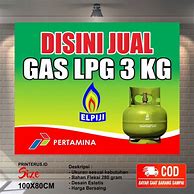
Add yearly revenue numbers
You can also check the referral value by adding up the total revenue from referred customers within a year. Subtract the referral program annual cost, which could include advocate incentives and referral software subscriptions. After subtracting the costs of acquiring referral customers, you will get the net referral revenue. Here is a simple formula:
Net Annual Revenue from Referred Customers = Total Revenue from Referred Customers – Annual Cost of Referral Program
For example, for a business with $100,000 in total revenue from referred customers and $25,000 in annual cost of the referral program, the net annual revenue from referred customers will be 100,000 – 25,000 = $75,000.
Compare the net revenue from referred customers to that from the non-referred customers. To calculate the net revenue from non-referred customers, subtract the acquisition costs from the total annual revenue.
Trust and credibility
Referrals are a powerful tool for building trust and credibility with leads for any business. As they tell others about your business, they help you demonstrate your expertise, value, and results. Thus, it’s easier to overcome skepticism and objections from potential customers.
If anything, referrals talk positively about your business because they trust it to deliver the promised results. They want their contacts to also experience the same results. So, they advocate for your business among their friends. Besides, 74% of consumers say they’re influenced by word-of-mouth to make purchasing decisions because of the trust they have in their referrers.
Additionally, a referred customer will likely be more loyal than a customer acquired in any other way. According to a study by the Wharton Business School, referred customers have an 18% lower churn than other customers. They stay because their referrers are staying anyway.
Plus, whether on social media or by word-of-mouth, people tend to follow other people’s opinions or actions in unfamiliar or uncertain situations. This is called social proof. After hearing from their friends and family members, potential customers trust you and are willing to try or purchase your products.
The typical referral program costs much less than traditional methods of customer acquisition. On average, the customer acquisition cost for referred customers is at least $24 lower than traditional advertising. Since each referred customer is more profitable by at least $0.45 daily, they result in a higher return on investment.
Since they tend to stay for longer, referred customers have a higher lifetime value. It works simply. A customer who advocates for your brand will more likely make multiple purchases. Plus, these customers stay in your business for longer.
According to the Wharton Business School study, referred customers have an 82% likelihood of remaining active after more than 33 months. Thus, they have a longer customer lifecycle, especially if you reward them for every referral they make.
Finally, the average order value for referred customers is higher than for non-referred customers. As first-time customers, they are four times more likely to purchase. Their likelihood to make another purchase is higher by 54% and they have a higher order value of 34% compared to non-referred customers.
Choose the right referral program for your business
Now that you know a referral program's value, it’s time to move forward and create your own. Understand what your target customer looks like (and explain that to referrers), choose an incentive, and make it easy for happy customers to recommend you.
The best part? With Shopify POS integrations, you can create an omnichannel loyalty program that rewards customers shopping in-store and online.
Unlock the full potential of your referral program with unified commerce
New research reveals how unified commerce helps retailers deliver seamless experiences across online and in-store channels. Learn how connecting all your sales channels can help you turn loyal customers into powerful brand advocates.
Incentivized referrals
The most popular type of referral is incentivized, meaning a customer has a reason to refer your products to their personal network. In return for the referral, the existing customer may receive a discount on their next purchase, a complimentary product or service, or a cash incentive.
Lifestyle brand Erin Condren offers a double-sided referral program: giving a $10 coupon code for referred customers to use on their first purchase, and a $10 equivalent in 1,000 EC Insider points to the person making the referral.
Direct referrals are when your existing customer base actively refers your company to people looking for a product or service you provide. It’s the most traditional form of referral.
There’s not necessarily an incentive for the referrer to act; typically they are just genuinely happy with the product and are willing to share it with others.
Reputation-based referrals are when you have built a brand with such a strong reputation that people are confident in mentioning you to someone looking for the products or services you offer—even if they haven’t bought from you themselves.
While it’s a good target to aim for, it’s not necessarily easy to get these types of referrals. They happen as an indirect result of having great products and a strong brand reputation.
Compare customer lifetime values
One way to calculate the customer referral value is to find the average lifetime value of all your referred customers:
Here’s what this customer lifetime value calculation looks like in formulas:
Average Customer Value = [Average Purchase Value x Average Purchase Frequency] – Average Customer Acquisition Cost
Customer Lifetime Value = Average Customer Value x Average Number of Years Customers Stay
For example, if a business has an average purchase value of $10,000, an annual purchasing frequency of 3, and an average customer acquisition cost of $5,000, the customer lifetime value is [10,000 x 3] – 5,000 = 30,000 – 5,000 = $25,000.
The resulting figure is the average customer value. Multiply that by the average number of years individuals remain customers. That should give you the referral customer lifetime value.
For non-referred customers, the formula above is also applicable. Calculate the average purchase value and multiply it by the customers’ average purchase frequency. Subtract the average customer acquisition cost and multiply the resulting value by the average number of years a customer remains loyal.
Compare this figure with the referral customer lifetime value to see which is better. The same formula is also useful in calculating the overall customer lifetime value before and after starting the referral program.
Determine the incentives
Incentivizing customers to make a referral can be an effective tactic to get more people using your program. Make a plan to determine which customers receive rewards and clearly state the details on your website.
Some companies give both the referrer and the new customer an incentive for joining. This is a win-win: New customers are incentivized to purchase through a referral link. When they do, the person who referred them is also rewarded.
Dollar credits are among the most popular referral rewards. Percentage discounts are also commonly offered as rewards. Other reward options include free products, free month subscriptions, and points to redeem on future purchases.
Regardless of which incentive you chose, a solid understanding of your customer lifetime value (CLV) is key. You want the cost of acquiring each referred customer (i.e., the cost of the incentive) to be less than the total revenue brought in by the customer.
Examine the viral loop
You might also examine the customer lifetime value, or yearly revenue, specifically of referred customers who successfully bring in other customers. Add up the value of these customers and the customers they brought in.
This doesn’t show your business’ full referral value, but it does focus in on the impact of those referred customers who have become advocates and continued the viral loop.
What is a referral program?
A referral program is a marketing strategy that rewards customers for sending friends and family to your business and recommending your products.
How does a referral program work?
A referral program reaches out to loyal customers to let them know about incentives they can earn based on how many personal referrals they send to the company. Marketing outreach may start as an email exchange, SMS message, or pop-up on your website. The customer can opt into the referral program and then send their link or code to others to use; the referred customer may also receive some type of reward or discount.
Why are referrals so valuable?
Compared to traditional methods of client acquisition, referrals can make your target audience view your company as trustworthy and credible. A referral strategy is also the most cost-effective way to acquire customers. Plus, there’s a strong likelihood that referred customers will also refer their friends and family. Let’s dive into three reasons why referred customers generate a high value.























